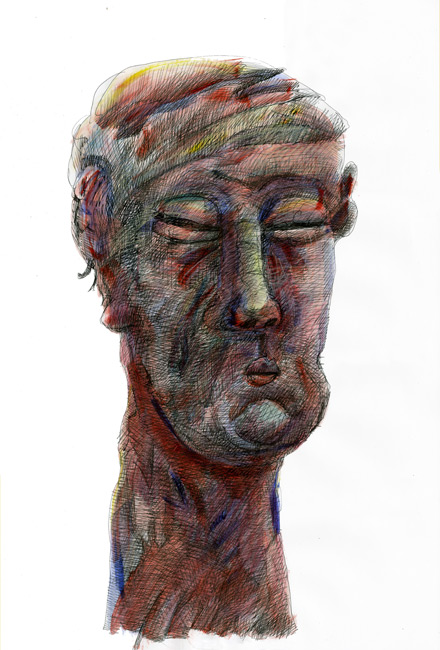This paper proposed the Harris-Affine detector, which is intended to work under substantial image affine transformation(e.g. > 40 degree viewpoint change). We should note that even it is claimed as fully affine invariant, the detector still contains a multi-scale Harris part that is only similarity invariant. This is common to many related work due to the computational time issue.
Harris-Affine detector first uses the Harris detector to locate possible interest points in the scale space. The found points then undergo an iterative refinement process to compute the accurate shape, scale and location information. At each iteration, the algorithm finds a new scale value according to the newly refined point location. The scale value is selected w.r.t. the LoG response and to the resulting isotropy of the second moment matrix. It then searches the maximum Harris response in this scale for the new point location. The patch around the found location at the found scale are then used to compute the next second moment matrix and to refine the local straightening transformation. Those steps comprise a complete iteration. The iteration stopped when a nearly perfect isotropy is achieved, often in less than 10 iterations.
The experiments show a great improvement over isotropic detectors such like LoG, DoG or Harris-Laplace under large view angle difference. However it also exposes one problem: with better ability to resist affine transformation, the detector suffers from lower discriminative regions after most distortions are restored. Another problem is the runtime. In the experiments the Harris-Affine detector requires tens more time to complete as compared to the fastest ones. It is certainly a problem if the much more time is of worth. To this point, I think a good option is to combine several detectors so that we can take the merits from all of them. For example, we can use SIFT to find reliable matching images from a database and then apply Harris-Affine detectors to estimate more precise geometric relations. Such a hybrid approach should be more useful than applying any single one only.
2008年3月2日 星期日
訂閱:
張貼留言 (Atom)


沒有留言:
張貼留言